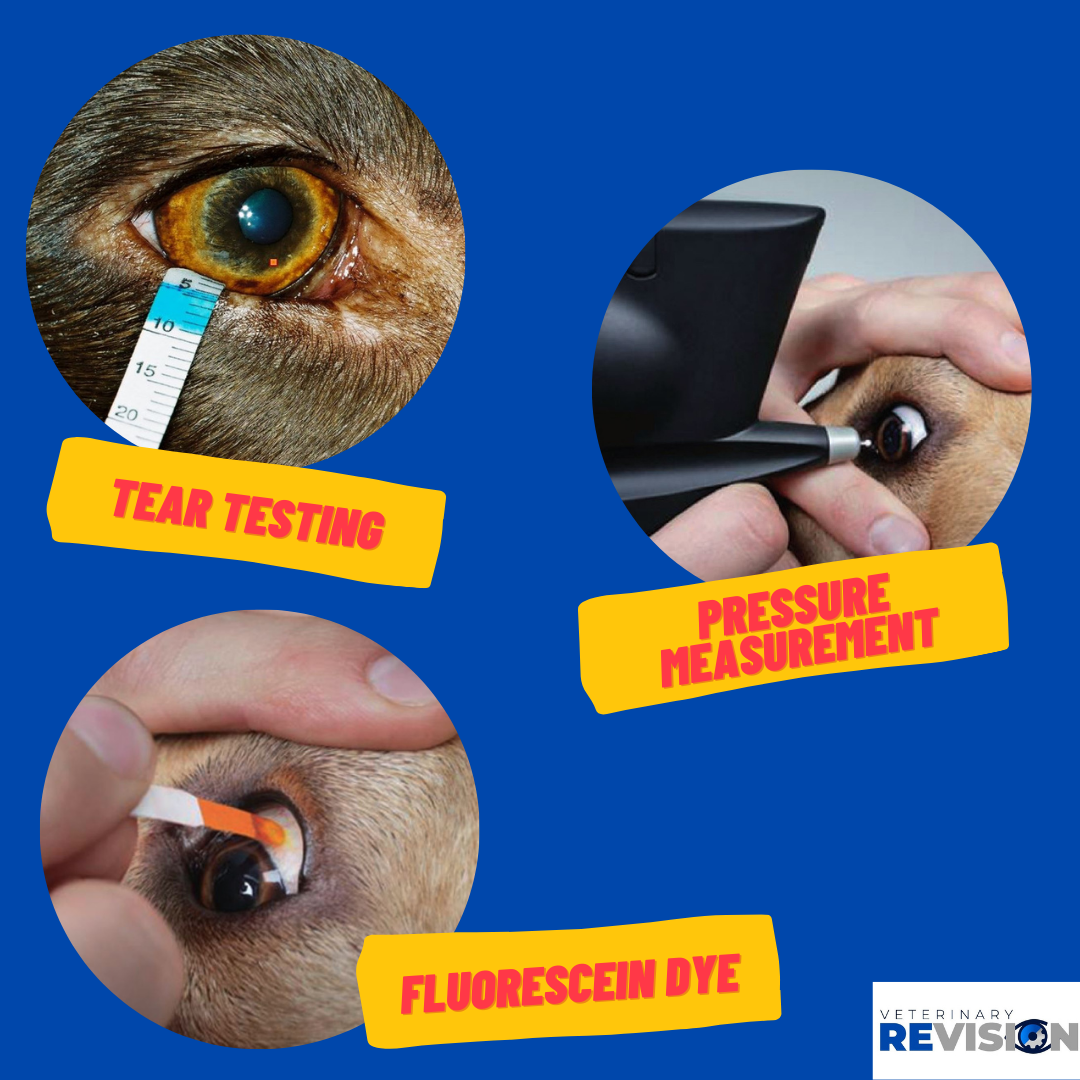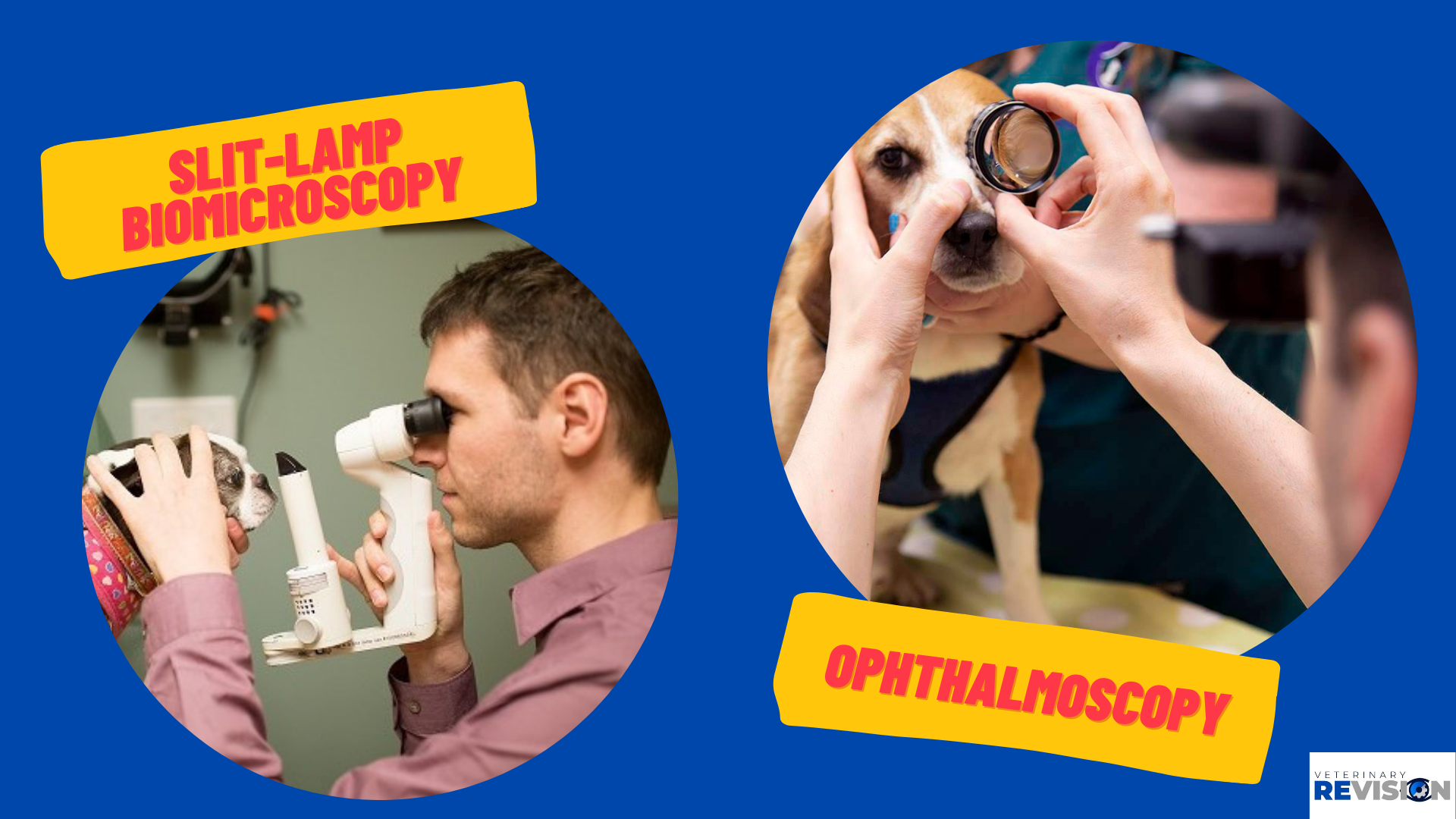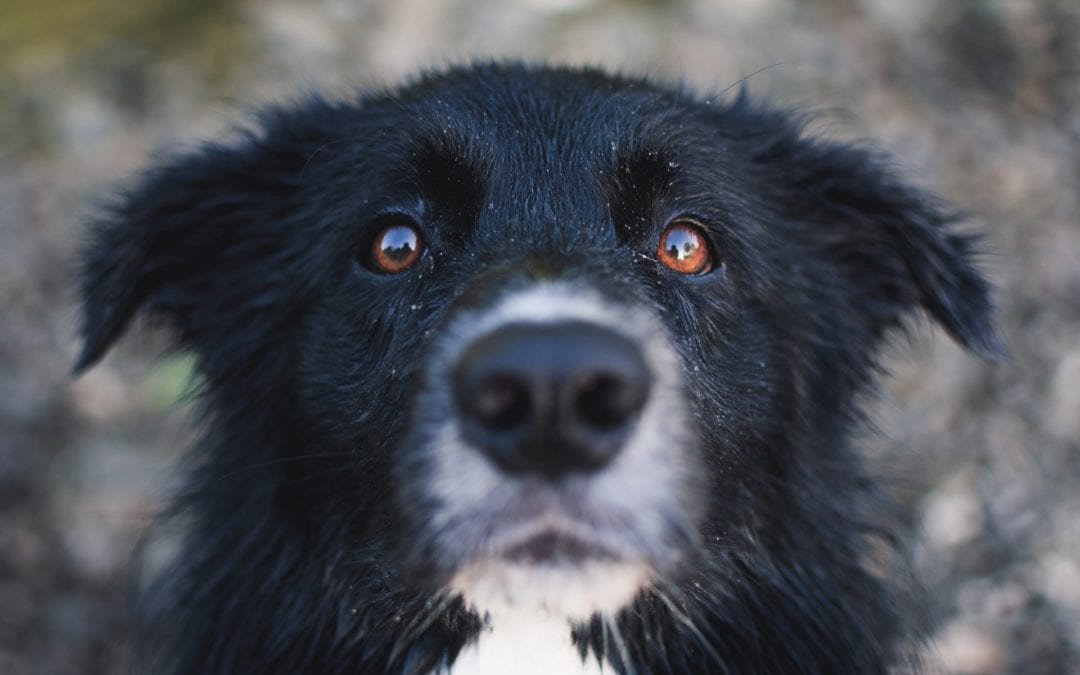We understand that seeing a veterinary specialist, especially an ophthalmologist, may be an unexpected and unfamiliar experience for you and your pet. We’d like to take the opportunity today to share with you what a comprehensive ophthalmic evaluation actually involves.
No, we won’t ask your pet to read an eye chart. We will, however, ask you questions about his or her overall health and eye history. Don’t worry, though; we also spend a generous amount of time and effort reviewing your primary care veterinarian’s medical records even before the appointment begins.
Following a conversation about your pet’s medical history, we will begin the evaluation by performing 2 to 3 simple preliminary diagnostic tests for complete and accurate assessment. These tests provide valuable information, are painless, and take only a few minutes. Even if some of the tests were performed previously, we might need to repeat them to verify (or refute) past findings. After all, aren’t you coming to a veterinary specialist for precise diagnosis, prognosis, and treatment?


- Schirmer tear testing using a small strip of paper to absorb and quantify tear volume over 60 seconds. While most commonly used to identify low tear production consistent with “Dry Eye”, this test may also reveal an overproduction of tears in conditions with irritation or discomfort.
- Tonometry, similar to the “puff of air test” that you may have had at your own eye doctor, involves a veterinary-specific handheld device that gently contacts the surface of the eye to measure intraocular pressure in order to screen for diseases like glaucoma and uveitis.
- Fluorescein dye application to the ocular surface to reveal many diseases including corneal ulceration, perforation, poor quality tear film, and nasolacrimal duct obstruction.
- Slit-lamp biomicroscopy to evaluate the front structures of the eye, including the eyelids, cornea, iris, and lens.
- Ophthalmoscopy to evaluate the deeper structures within the eye, including the vitreous and retina.
After making a comprehensive assessment, we will discuss your pet’s diagnosis and propose a management plan. Although most consultations last about 30 minutes, we will take as long as necessary to ensure all of your questions are answered.
Afterward, we may provide medications, procedure plans, and/or monitoring instructions, and we will email you (and your primary care veterinarian) a written summary by the end of the day. Follow-up appointments are less time-consuming and may not require the same degree of thoroughness.
Finally, we do our best to make the visit as convenient and stress-free as possible for you and your pet. If you or your pet needs a special arrangement, please let us know, and we’ll try to accommodate!

